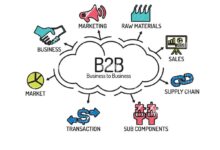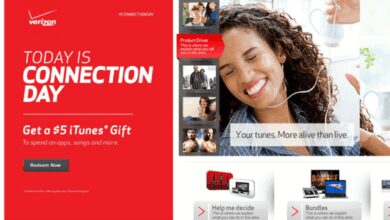B2B Meaning: 7 Powerful Insights You Must Know
Ever wondered what ‘B2B meaning’ really stands for in today’s fast-paced business world? It’s more than just companies selling to other companies—it’s the backbone of global commerce, driving innovation and growth behind the scenes.
Understanding the Core B2B Meaning

At its heart, the B2B meaning refers to ‘Business-to-Business’—a model where one business sells products or services to another. Unlike B2C (Business-to-Consumer), where companies target individual buyers, B2B focuses on facilitating operations, supply chains, and growth among organizations. This distinction is crucial because it shapes marketing strategies, sales cycles, and customer relationships.
Defining B2B in Modern Commerce
The term B2B has evolved significantly over the past few decades. Originally tied to manufacturing and wholesale trade, it now spans digital platforms, SaaS (Software as a Service), logistics, consulting, and more. According to Investopedia, B2B transactions account for trillions of dollars in global economic activity annually.
- B2B involves long-term contracts and bulk purchasing.
- Decision-making is often multi-layered, involving procurement teams.
- Relationships are built on trust, reliability, and performance metrics.
How B2B Differs from B2C
While both models aim to generate revenue, the b2b meaning diverges sharply from B2C in several key areas. For instance, B2C customers often make emotional or impulse purchases, whereas B2B buyers rely on logic, ROI analysis, and strategic alignment.
- Sales cycles in B2B are longer—sometimes lasting months or even years.
- Pricing is typically negotiated rather than fixed.
- Marketing content in B2B is educational and data-driven.
“B2B is not just about selling; it’s about solving business problems.” — HubSpot
Historical Evolution of B2B Meaning
The concept of businesses serving other businesses isn’t new. Long before the internet, manufacturers relied on wholesalers, and factories sourced raw materials from suppliers. However, the formalization of the b2b meaning as a distinct business category emerged with industrialization and later accelerated with technological advancements.
Industrial Revolution to Mid-20th Century
During the 18th and 19th centuries, the rise of factories created a demand for machinery, raw materials, and transportation services—all classic examples of early B2B relationships. Companies like Carnegie Steel operated within tightly knit supplier networks, laying the groundwork for modern supply chain dynamics.
- Procurement was manual and localized.
- Communication relied on telegrams and postal mail.
- Transactions were based on personal relationships and reputation.
The Digital Transformation Era
The late 20th century brought a seismic shift. With the advent of enterprise resource planning (ERP) systems and electronic data interchange (EDI), B2B operations became faster and more efficient. The launch of platforms like SAP and Oracle revolutionized how businesses managed inventory, orders, and supplier coordination.
- Automation reduced human error in order processing.
- Global sourcing became feasible and cost-effective.
- Digital catalogs replaced paper-based procurement.
Key Characteristics of B2B Meaning Today
Modern B2B isn’t just about transactions—it’s about ecosystems. The current b2b meaning encompasses complex networks of vendors, partners, distributors, and technology integrators working together to deliver value.
Longer Sales Cycles and Complex Decision-Making
One of the most defining traits of B2B is the extended sales cycle. Unlike B2C, where a customer might click “buy now” after seeing an ad, B2B purchases often require approvals from multiple stakeholders—finance, operations, IT, and executive leadership.
- Buyers conduct thorough vendor evaluations.
- RFPs (Requests for Proposals) are common in large deals.
- Demonstrations, trials, and pilot programs are standard.
Relationship-Driven Transactions
Success in B2B hinges on building strong, lasting relationships. Trust is paramount. A supplier that consistently delivers quality goods on time will be favored over a cheaper but unreliable alternative.
- Account managers play a critical role in maintaining client satisfaction.
- Customer success teams ensure ongoing value delivery.
- Contract renewals depend heavily on relationship health.
B2B Meaning Across Industries
The b2b meaning manifests differently depending on the sector. While the core principle remains the same—businesses selling to other businesses—the applications vary widely.
Manufacturing and Supply Chain
In manufacturing, B2B is foundational. A car manufacturer, for example, doesn’t produce every component in-house. Instead, it sources engines from one supplier, electronics from another, and tires from a third—all B2B relationships.
- Just-in-time (JIT) inventory systems rely on precise B2B coordination.
- Supplier performance is measured using KPIs like on-time delivery rate.
- Global disruptions (e.g., pandemics, wars) expose B2B supply chain vulnerabilities.
Technology and SaaS
The tech industry has redefined the b2b meaning through cloud-based services. Companies like Salesforce, Zoom, and Slack operate on B2B SaaS models, offering scalable software solutions to enterprises worldwide.
- Subscription-based pricing dominates.
- Integration with existing systems (like CRM or ERP) is crucial.
- Security and compliance (e.g., GDPR, HIPAA) are major selling points.
“Over 80% of enterprises use at least one SaaS application.” — Gartner
The Role of Marketing in B2B Meaning
Marketing in the B2B space is fundamentally different from consumer marketing. The b2b meaning extends into how companies communicate value, generate leads, and nurture prospects through a rational, evidence-based journey.
Content Marketing and Thought Leadership
B2B buyers are educated and skeptical. They seek detailed information before making decisions. This is where content marketing shines—whitepapers, case studies, webinars, and industry reports help establish authority.
- LinkedIn is the top platform for B2B content distribution.
- SEO-driven blog content ranks highly for niche industry queries.
- Webinars can generate high-quality leads with minimal cost.
Digital Advertising and Lead Generation
Paid advertising in B2B focuses on precision targeting. Platforms like Google Ads and LinkedIn Ads allow businesses to reach decision-makers by job title, company size, and industry.
- Landing pages are optimized for lead capture (e.g., form fills).
- Retargeting campaigns keep brands top-of-mind during long sales cycles.
- Marketing automation tools (e.g., Marketo, HubSpot) nurture leads over time.
B2B E-Commerce and the Future of B2B Meaning
The digital age has transformed the b2b meaning into something far more dynamic. B2B e-commerce is no longer a niche—it’s a necessity. According to a report by Forrester, B2B e-commerce in the U.S. alone is projected to reach $2.1 trillion by 2028.
Rise of Online B2B Marketplaces
Platforms like Alibaba, Amazon Business, and ThomasNet have made it easier than ever for businesses to discover and purchase from suppliers globally. These marketplaces offer transparency, reviews, and streamlined ordering—features once exclusive to B2C.
- Buyers can compare prices and specifications instantly.
- Sellers gain access to a broader customer base.
- AI-powered recommendations enhance discovery.
AI and Automation in B2B Transactions
Artificial intelligence is reshaping how B2B companies operate. From chatbots handling customer inquiries to predictive analytics forecasting demand, AI enhances efficiency and decision-making.
- Dynamic pricing algorithms adjust quotes based on market conditions.
- Smart contracts automate purchase approvals and payments.
- CRM systems use AI to prioritize high-value leads.
Challenges and Opportunities in B2B Meaning
While the b2b meaning represents immense opportunity, it also comes with unique challenges. Understanding these helps businesses navigate the landscape more effectively.
Customer Retention and Churn Management
Acquiring a new B2B customer can cost five to seven times more than retaining an existing one. High churn rates can destabilize revenue streams, especially in subscription-based models.
- Proactive customer support reduces dissatisfaction.
- Regular check-ins and success reviews build loyalty.
- Feedback loops help improve product-market fit.
Globalization and Cultural Sensitivity
As B2B operations expand globally, cultural nuances become critical. A negotiation style that works in Germany may fail in Japan. Understanding local business etiquette, legal frameworks, and communication preferences is essential.
- Localization of marketing materials increases relevance.
- Time zone differences affect responsiveness.
- Currency fluctuations impact pricing strategies.
Measuring Success in B2B Meaning
How do you know if your B2B strategy is working? Unlike B2C, where success might be measured by daily sales spikes, B2B relies on long-term metrics that reflect sustainability and growth.
Key Performance Indicators (KPIs)
B2B companies track a range of KPIs to evaluate performance. These include Customer Acquisition Cost (CAC), Lifetime Value (LTV), churn rate, and Net Promoter Score (NPS).
- LTV:CAC ratio should ideally be 3:1 or higher.
- Monthly Recurring Revenue (MRR) is vital for SaaS businesses.
- Sales cycle length indicates efficiency in conversion.
Customer Satisfaction and Net Promoter Score
NPS measures how likely customers are to recommend your service. In B2B, a high NPS often correlates with contract renewals and upsell opportunities.
- Surveys should be timed post-implementation or renewal.
- Follow-up on detractors to address concerns.
- Advocates can become case study subjects or referral sources.
What is the basic b2b meaning?
The basic b2b meaning is Business-to-Business, where one company provides products or services to another company, rather than to individual consumers. This model is common in manufacturing, wholesale, SaaS, and professional services.
How does B2B differ from B2C?
B2B involves longer sales cycles, multiple decision-makers, and rational purchasing based on ROI. B2C is typically faster, emotionally driven, and targets individual consumers directly.
What are examples of B2B companies?
Examples include Salesforce (SaaS), Intel (semiconductors), Grainger (industrial supplies), and McKinsey & Company (consulting). These firms serve other businesses rather than end consumers.
Is B2B e-commerce growing?
Yes, B2B e-commerce is rapidly growing. Forrester predicts U.S. B2B e-commerce will hit $2.1 trillion by 2028, driven by digital transformation, online marketplaces, and AI-powered platforms.
Why is relationship management important in B2B?
Relationship management is crucial in B2B because purchases are high-value and long-term. Trust, reliability, and consistent performance determine contract renewals and business growth.
Understanding the b2b meaning is essential for anyone involved in modern business. From its historical roots to its digital future, B2B represents a complex, relationship-driven ecosystem that powers global commerce. Whether you’re a startup selling software or a manufacturer sourcing materials, mastering the nuances of B2B—long sales cycles, strategic marketing, customer retention, and digital innovation—can set you apart in a competitive landscape. As technology continues to evolve, so too will the ways businesses connect, collaborate, and create value together.
Further Reading:









